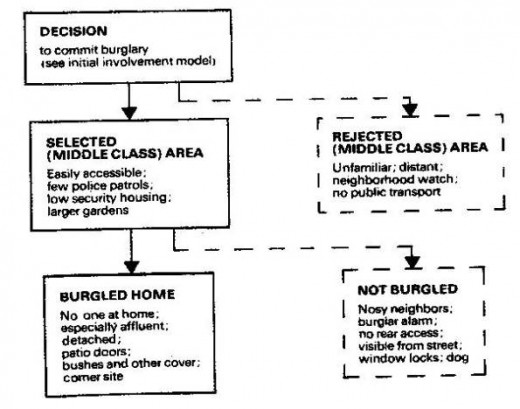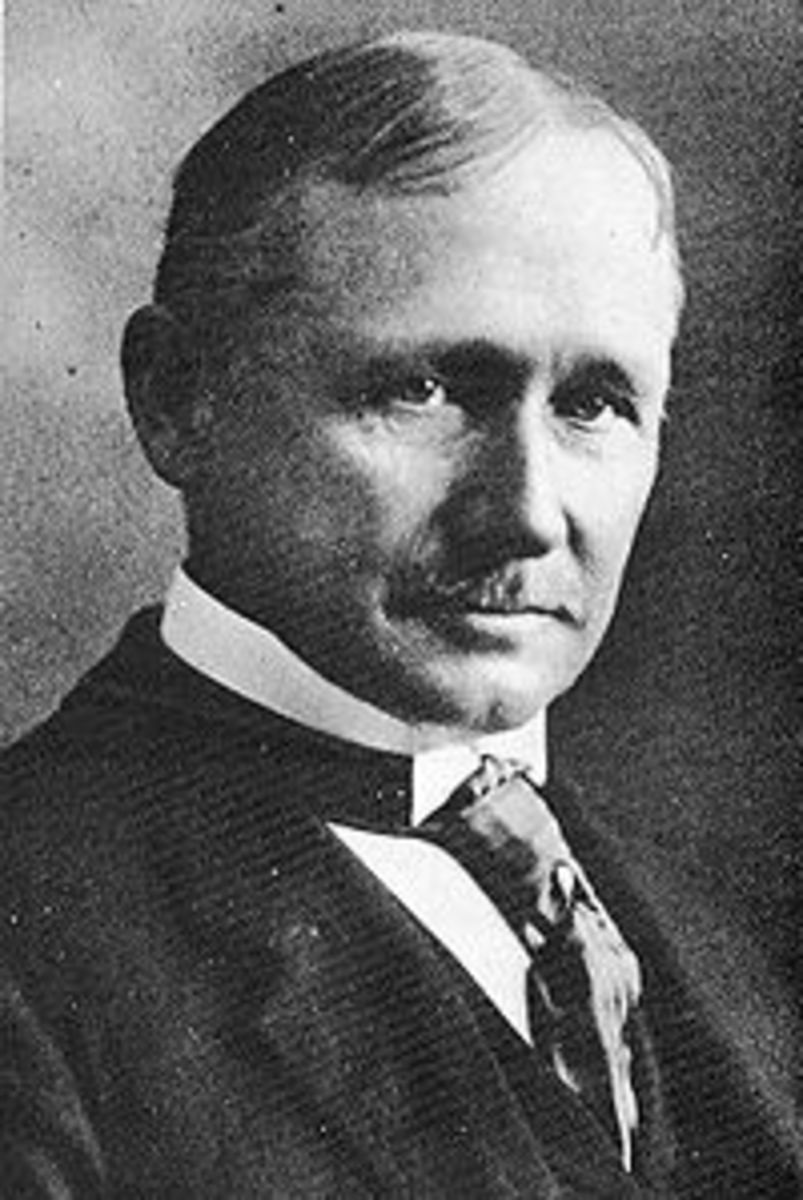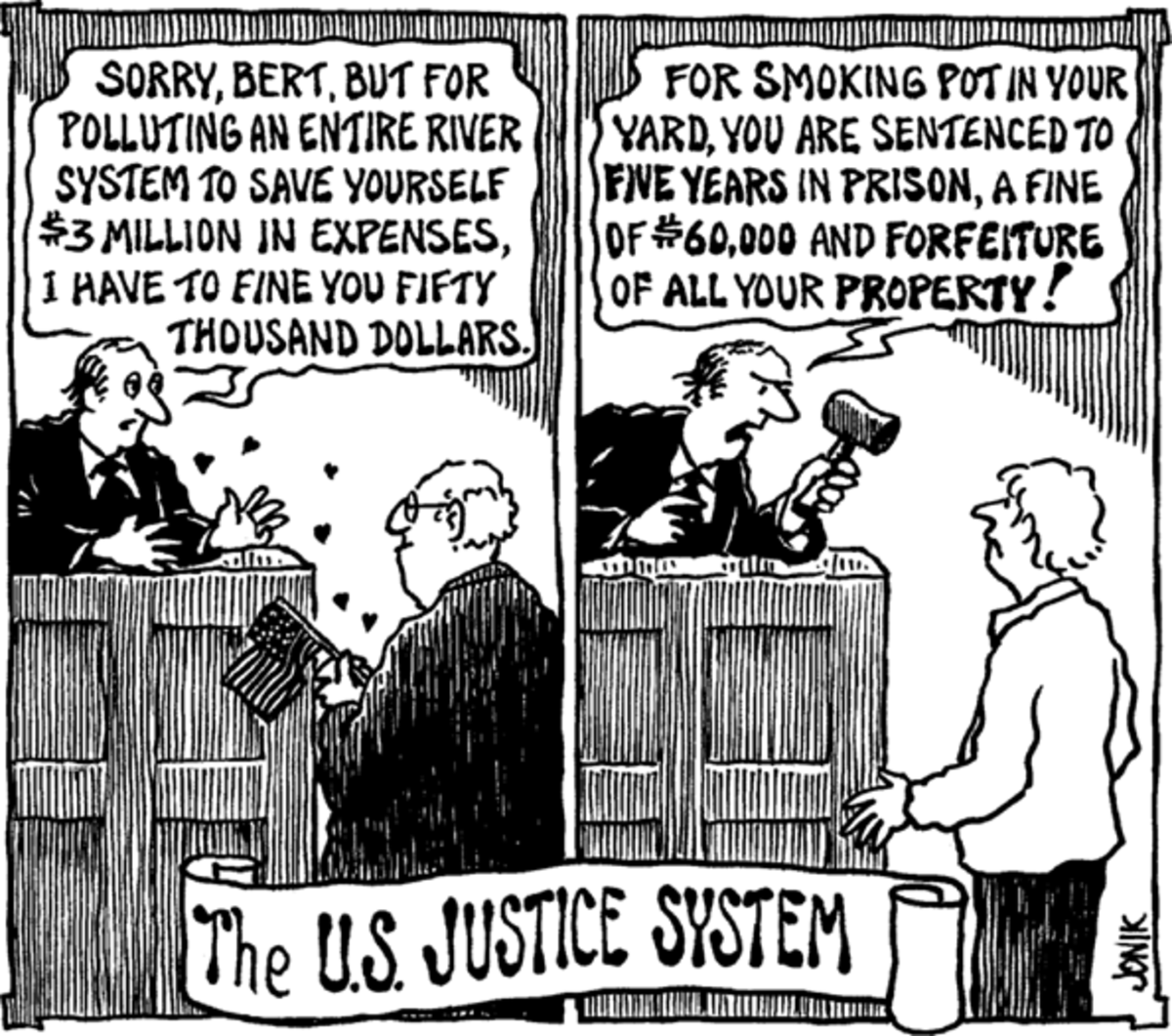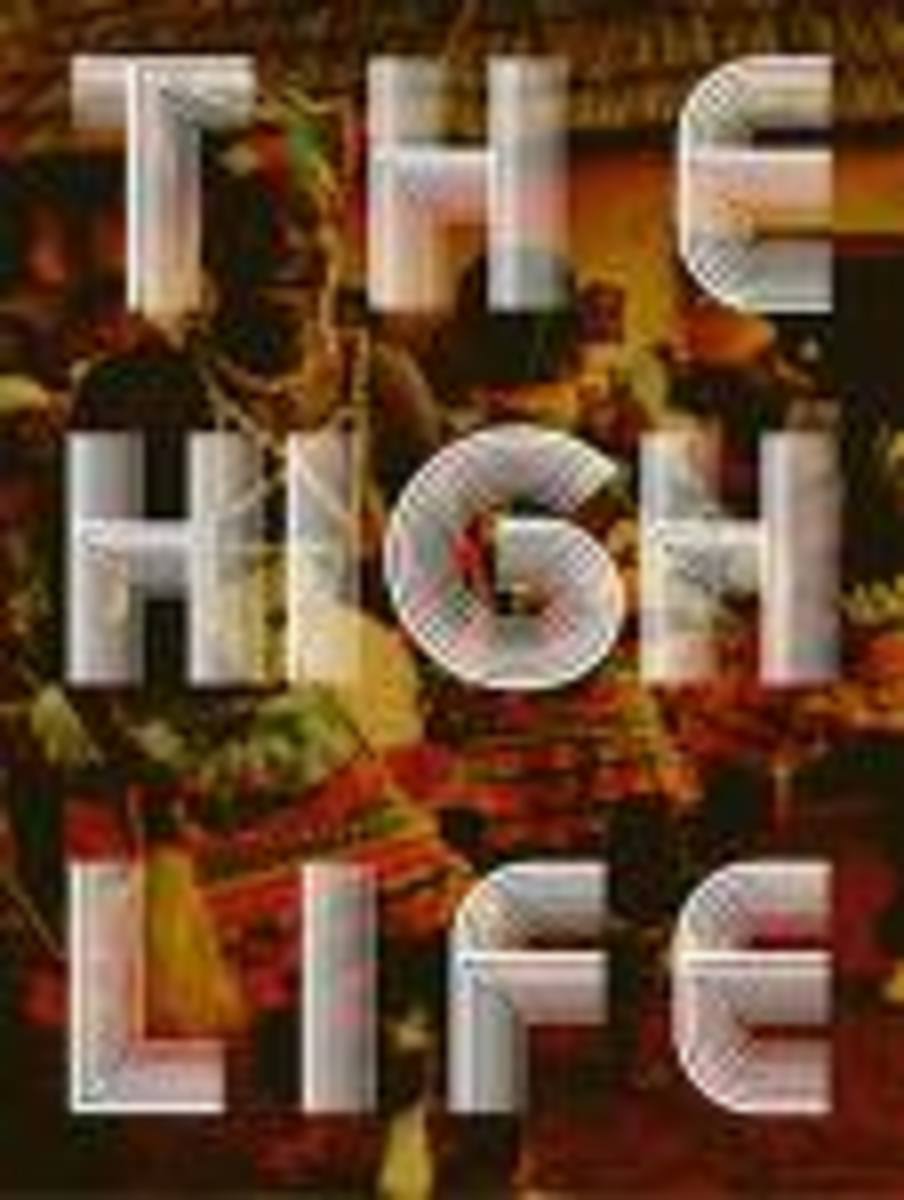Rational Choice Thoery

Rational Choice Theory
Rationality.
What is a rational decision? To answer this question one must know what rational means as well as what decision means. Rational means to have reason, sensibility, or sound judgment (Harper, 2010). A decision is determining something, making up one’s mind, or coming to a conclusion (Dictionary.com, 2009). Therefore, a rational decision is a technique for methodically choosing among potential choices that is established on reason and facts (WebFinance Inc., 2014). Rational decisions are based on logical choices that a person can make. This means that a person who has reason will judge the choices he or she can make to come to a conclusion.
Why Use Theory?
Theory is a term used to describe an idea or set of ideas that is intended to explain facts or events (Merriam-Webster, 2014). Therefore, a theory is suggested or presented as possibly true but that is not known or proven to be true, as well as, the general principles or ideas that relate to a particular subject (Merriam-Webster, 2014). Why use theory? Criminological Theories are an important part of criminology. Criminological Theories examine why people commit crime and is very important in the ongoing debate of how crime should be handled and prevented (Briggs, 2013). Many theories have been developed and researched throughout the years. These theories continue to be explored, separately and in unison, because criminologists pursue the paramount elucidations in eventually reducing types and intensities of crime (Briggs, 2013). Theories allow criminologists insight into the behaviors of criminals. Learning behaviors and patterns allows criminologist the knowledge they need to help with the ongoing problem of crime and how to prevent, enlighten about, eliminate, and punish criminal acts.
Theories allow criminologist and other researchers to divulge the influences and different aspects of a person’s character and behavior. By creating theories, a criminologist can analyze a criminal’s past behavior. This analysis can create a profile. The profile can then be used to sort through suspects of a crime or create a truer version of the criminal man or woman. Thus, the profile that came from theory can disclose a potential suspect that is true to a certain profile.
Rational Choice Theory. Rational choice theory came about in the late 1970’s and early 1980’s (Schmalleger, 2014). Rational choice theory imitated many ideologies of the classical school of criminology (Schmalleger, 2014). Cesare Beccaria created a simple cost benefit analysis model in 1764, while Jeremy Bentham proposed the hedonistic calculus (Vold, Bernard, & Snipes, 2002). The hedonistic calculus states that behavior hold value to any individual undertaking it according to the amount of pleasure or pain that it can be expected to produce for that person (Schmalleger, 2014). Criminal justice kept the classical school of thought, however criminologists of the 1870s decided to take another track to the positivist school of criminological thought on criminal activity (Vold, Bernard, & Snipes, 2002). After on hundred years of positivism’s failed attempts to reduce crime the classical view of criminology resurfaced (Vold, Bernard, & Snipes, 2002).
Eventually, in 1985, the rational choice approach was introduced to the effort of explaining crime (Vold, Bernard, & Snipes, 2002). Ronald V. Clark and Derek B. Cornish are the creators of the rational choice theory (Cullen & Agnew, 2003). Rational choice theory states that criminals make a conscious, rational, and at least partially informed decision or choice to commit criminal acts (Schmalleger, 2014). Rational choice theory figures that offenders are rational people who seek to maximize pleasure and minimize their pain (Cullen & Agnew, 2003). This approach to criminal thought led to policy recommendations which focused on changing situations in order to influence potential offender’s calculations (Vold, Bernard, & Snipes, 2002).
Assumptions of Rational Choice Theory. There are some assumptions made by rational choice criminologists. Peter Abell (1991) noted these assumptions of criminologist rational choice theorists. These assumptions include: individualism, optimality, structures, self-regarding interests, and rationality (Abell, 1991). Individualism is based on the idea that it is individuals who ultimately take actions (Ogu, 2013). This means that the people are the actors who make a rational decision after calculation the risks and rewards. Optimality is based on the generalization that individuals chose their arrangements according to their preferences and the occasions and restrictions that are placed on that individual at the time (Ogu, 2013). This means that if a person wants to commit an act that they will commit that act the best that they can despite the circumstances surrounding the occasion. Structures and norms that dictate a single course of action are merely special cases of rational choice theory (Abell, 1991). In other words, the range of choice differs depending on the circumstances surrounding it, whereas in another circumstance there may only be one choice (Ogu, 2013). Self-regarding interest is an assumption that people are out for their own personal gain, but are definitely not looking to inflict pain upon themselves (Merriam-Webster.com, n.d.). Ogu (2013) states that self-regard is a key assumption to rational choice theory, however it is not as essential to the theory as the assumption of optimality. Finally, rationality is the most predominant assumption of rational choice theory. Ogu (2013) states that according to the assumption of rationality, all individuals act in ways that would benefit them more and every individual is most likely to participate in plans that they feel are the best option that would be to their advantage.
Case. Case studies are a way to show previous crimes and rationale the offender gives or the criminal justice system gives to explain an offender’s actions. Criminologists argue that in using rational choice theory it is essential to implement a crime-specific center when investigating crime (Cullen & Agnew, 2003). Criminologist focus on the situations surrounding crime when using rational choice theory (Cullen & Agnew, 2003). An example of rational choice theory and criminal activity is looting during and after a natural disaster. Looting is the criminal act of stealing goods from somewhere such as a store or house (Merriam-Webster.com, n.d.). Before and during natural disasters, people leave their homes and business owners leave their businesses unattended to avoid danger. During and after natural disasters, people sometimes choose commit the criminal act of looting. These criminals break into businesses and homes to see the treasures they can steal. Rational choice theory can be used to explain this because rational people are using the situation of a natural disaster to gain access to items that were vacated by home and business owners. People claim that had their not be a natural disaster (the circumstance or situation) that they would not have committed the act (which was rational). People can see instances of looting during Hurricane Katrina as a rational choice to commit a criminal act under a natural disaster.
Music. Music is a way to convey messages. Eric Church’s song, “Lightning,” delivers a message of rational choice. This song tells the story of a man on death row. Eric Church tells a story from the point of view from a man on death row. In most instances people would say that if a man is on death row, he deserved it, but in this portrayal the listeners actually feel sympathy for the murderer. The lyrics are from a first person account that leads us to identify with the murderer more than an account of a person looking in. This is because the listened gets to hear the murder’s thoughts. Being able to hear the murder’s thoughts allows listeners to be sympathetic because they can understand how truly sorry this person is and his understanding of the punishment fitting the crime.
Eric Church provided a view that was not politically driven, but person oriented. He wrote a song about choices and consequences for a person’s actions. He conveyed a message of rational choice without the deliverance of “this way is right” and “this way is wrong” attitudes of the actors in the song.
[1]The quote from the song tells the listener that he made a choice to shoot the store attendant because he was reaching for his gun. If the store attendant would have just given him what he had asked for instead of trying to get a gun to shoot him, then he would not have shot the attendant. This shows a rational decision from the murderer in a situation where he had to shoot or be shot by the attendant.
The next quote from the song allows us to see the why the murderer made the decision to commit robbery in the first place. He had a baby at home who was hungry and crying, which made him rob the store and unfortunately kill a young store attendant. He had a situation where he had a baby crying because she was hungry, so he made a rational decision to rob the store to feed her. If he did not have a hungry baby at home he would not have robbed that store and in turn killed the young boy.
The song “Lightning” by Eric Church is the ultimate portrayal of rational choice theory in that there was so many choices to be made. There was the choice of the person choosing to rob the store so he could feed his baby. There was the choice of the attendant to give the robber what he wanted or to pull the gun. The attendant pulled the gun which allowed for the robber to make a decision to shoot or be shot. The situation of this murder of the attendant all stemmed from a parent trying to feed their hungry child. He wasn’t planning on hurting anyone as he went into the store.
Some people, however, that this song is not an example of rational choice theory. These people can argue this because they can say the robber was acting irrational. Most parents have a goal of providing for their children, but when they cannot do so it causes some to become irrational. These skeptics would say that not being able to provide made him irrational and therefore would not be covered under the rules and principles of rational choice theory.
Strengths. Criminologists feel that there are certain strengths found within the realm of rational choice theory.Political science uses rational choice theory as the prototype for a more logical approach to political analysis (Ogu, 2013). The rational choice model is described as a “unified framework for understanding all human behavior,” (Becker, 1976). One advantage of the rational choice theory is that one set of assumptions relates each type of actor to the circumstances surrounding them which gives a set of operational assumptions for specific environments and actors (Ogu, 2013). Rational choice theory allows for the assumption of self-regarding functionality paired with rationality to treat variations in choices among actors (Ogu, 2013). This means that the only relevant variables for determining action ate preferences and beliefs (Ogu, 2013). Also a strength of rational choice theory is predictability. Rational choice theory has been used to create a variety of theories. These theories use predictions about the measurable real world occurrences and rule out a larger set of outcomes that what is already more generally accepted to be improbable (Ogu, 2013).
Critiques. As there are strengths, criminologists also have criticisms of rational choice theory. One criticism of rational choice theory is that is has an emphasis on the premise of individual choice through comparative neglect of the importance of outside social influences (Schmalleger, 2014). Human social action and interactions are complex, and many of the theories may provide better guides to how crime takes place (Ogu, 2013). Some social influences in the causation of crime are being underprivileged, disadvantaged home environment, and inadequate socialization of the potential offender (Schmalleger, 2014). Norms and lifestyle habits may guide individuals, and once these take root these individuals may not question them but use them to pursue social action (Ogu, 2013). Another critique of rational choice theory is that it does not sufficiently ruminate the impact of emotional states on rational ability and the role of things such as drugs and alcohol in a person’s decision making aptitude (Schmalleger, 2014). All forms of action have been expanded as being rational which allows actions that are non-rational or irrational to become part of the rational choice model (Ogu, 2013). Including every possible action in the rational choice model makes the standards blurred in figuring out what is rational and what is not rational (Ogu, 2013). Displacement of crime from one area to another because of changing the immediate situation to reduce crime is another criticism of rational choice theory (Schmalleger, 2014). This is considered target hardening. Target hardening is the reduction of criminal opportunity for a particular location through the use of physical obstructions, architectural design, and heightened security measures (North Yorkshire Police, 2014).
Variations from Rational Choice Theory. There are variations that get their foundation from rational choice theory. These theories are based on rationality just as rational choice theory is. Two of these theories are routine activities theory and deterrence theory.
Routine Activities Theory. Routine activities theory is a variation from rational choice theory. Routine activities theory has three main components (Baxter, 2013). The first component is an intersection of time and space of a motivated offender (Cullen & Agnew, 2002). The next component of routine activities theory is an attractive target (Cullen & Agnew, 2003). The third and final component of routine activities theory is a lack of capable guardian (Cullen & Agnew, 2002). The daily routines of people affect the probability that they will be an attractive target to a potential offender in a situation in which there is not a guardian present.
Deterrence Theory. Deterrence theory is also a variation from rational choice theory. Deterrence is defined as the act of making someone decide not to do something (Merriam-Webster.com, n.d.). Deterrence theory most fully reflects the ideas of classical theory of criminology (Cullen & Agnew 2003). There are two different forms of deterrence theory. Deterrence is split into general deterrence and specific deterrence. General deterrence is based on the idea that everyone will be deterred from committing a certain criminal act because of the punishment (Cullen & Agnew, 2002). Specific deterrence is based on the idea that punishment reduced crime of those specific people who are punished (Cullen & Agnew, 2002).
Reflection. From researching rational choice theory I feel that it can be used to explain almost any crime. This is a problem for me, because it is felt that everyone is rational and that is definitely not the case. Many people lack the capability to be rational, especially when committing a criminal act. Although I disagree with the rational choice theory explaining any crime, I believe that it is a paramount idea within the field of criminology. Rational choice theory has influenced other criminological theories which is important for the criminal justice system.
Also from researching rational choice theory I learned more about other theories from the classical school, which I liked. Learning about other theories allowed me to see how different theories stem and grow from each other. This was important because it gave me a connection to this research as it could possibly pertain to my thoughts as a criminologist stemming off into someone else’s own theory and thought someday. It also gave me hope for indifference to subjects because as some people critique rational choice, others find it very meaningful and important.
In conclusion, rational choice theory is important as it is used to explain crime as are all criminological theories. Rational choice theory can be explained in many forefronts of real world and media portrayals as seen in the case study and the use of Eric Church’s song. Also it is important to put forth the strengths and critiques of rational choice theory as to gain a better understanding of the theory as a whole.
Abell, P. (1991). Rational Choice Theory. Aldershot: Edward Elgar.
Baxter, D. D. (2013). Criminological Theories. Crime and the Media. Elkins.
Becker, G. (1976). The Economic Approach to Human Behavior. Chicago: The University of Chicago Press.
Briggs, S. (2013, 12 14). Important Theories in Criminology: Why People Commit Crime. Retrieved from Criminology For Dummies Cheat Sheet : http://www.dummies.com/how-to/content/important-theories-in-criminology-why-people-commi.html
Cullen, F., & Agnew, R. (2002). Criminological Theories Summary. Retrieved from University of Wisconsin-Eau Claire: https://www.uwec.edu/patchinj/crmj301/theorysummaries.pdf
Cullen, F., & Agnew, R. (2003). Criminological Theory. Los Angeles: Roxbury Publishing Company.
Dictionary.com. (2009). Decision. Retrieved from Collins English Dictionary: http://dictionary.reference.com/browse/decision?s=t
Harper, D. (2010). Rational. Retrieved from Online Etymology Dictionary: http://dictionary.reference.com/browse/rational
Merriam-Webster. (2014, 1 20). Theory. Retrieved from Merriam-Webster: An Encyclopedia Britannica Company: http://www.merriam-webster.com/dictionary/theory
Merriam-Webster.com. (n.d.). deterrence. Retrieved from Merriam-Webster: http://www.merriam-webster.com/dictionary/deterrence
Merriam-Webster.com. (n.d.). Loot. Retrieved from Merriam-Webster: http://www.merriam-webster.com/dictionary/loot
Merriam-Webster.com. (n.d.). self-regard. Retrieved from Merriam-Webster : http://www.merriam-webster.com/dictionary/self-regard
North Yorkshire Police. (2014, 2 20). 10 Principles of Crime Prevention. Retrieved from North Yorkshire Police: http://www.northyorkshire.police.uk/tenprinciples
Ogu, M. (2013). RATIONAL CHOICE THEORY: ASSUMPTIONS, STRENGHTS, AND GREATEST WEAKNESSES IN APPLICATION OUTSIDE THE WESTERN MILIEU CONTEXT. Arabian Journal of Business and Management Review (Nigerian Chapter) Vol. 1, No. 3,, 9.
Schmalleger, F. (2014). Criminology. Upper Saddle River : Pearson Education Inc.
Vold, G., Bernard, T., & Snipes, J. (2002). Thoretical Criminology. New York: Oxford University Press Inc.
WebFinance Inc. (2014). Rational Decision. Retrieved from Business Dictionary: http://www.businessdictionary.com/definition/rational-decision-making.html
[1] Lyrics courtesy of AZLyrics.com








